
How to properly put a mosaic on the wall. Master Class Tile
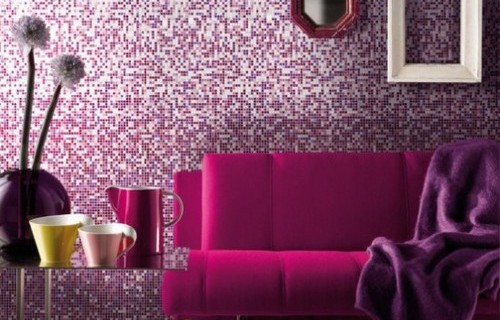
The tiled mosaic in the distant past was considered a faithful sign of luxury and content. Today, this fashion element of the interior has become publicly available thanks to modern industrial technologies. From the article, you will not only hand over the basic information about the mosaic tiles, but also on the proposed master class you can independently decorate any inexpressive wall of your home.
Content
Advantages of decorative mosaic for walls
The time passed when in the bathrooms and kitchens "reigned and mistaken" a cumbersome tile, a sophisticated mosaic came to replace him.
- Mosaic has a neat aesthetic appearance, thin and practically imperceptible docking seams.
- A wall mosaic with dignity withstands the impact of abrasive materials and moisture, is durable and unpretentious in care.
- Patterns, palettes and drawings that "collected" from mosaic can be unique in a single copy. The scene range of material is extremely wide.
- Mosaic without problems falls on smooth walls and surfaces and on curved curly elements.
Types of mosaic tile
At the place of use
Mosaic tile is divided into wall and outdoor.
Wall-mounted - "Raisin" of any room: living room, bathroom, kitchen or even a hallway. Very organically wall mosaic fits into the compositions of the pools, saunas and fountains.
The tile, which is placed on the floor, is valued for high strength. She makes not only floors in the rooms, but also garden paths or borders.
By material manufacturing
Mirror tile Mosaic
Original and creative. The composition of small pieces of mirrors visually lightes and expands the space. The edges of the tile are thoroughly processed - it is absolutely safe in operation. Well complements the interior of small premises: dark vests, bathrooms, small bedrooms. Gold and silver miniature mirrors "hide" any defects of the uneven wall.
Ceramic tile
It differs from usually large only with dimensions. Manufacturers offer incredible palette of colors and shades in their diversity. The texture is also impressive: a network of small cracks on the surface, imitation of an inhomogeneous surface, glazed surface, mixing two colors. Rectangular or square shaped mosaic "revive" facades of buildings, swimming pools, walls and floors in the kitchen or bathroom.
Tile Mosaic of Natural Stone
The material for the mosaic coating can be sandstone, tuff, marble or jasper. It turns out the image is unique - because not two pebbles of the same color. The material is perfectly processed: polished or artificially aged. Stones for mosaic make a rounded or irregular shape. Such a tile transforms the surface of the floors, garden tracks or a small courtyard site.
Artificial Granite Mosaic Tile
They are obtained by mixing the base natural material (marble, granite) with broken mirror glass. Thanks to such technology, the chips (pieces) tiles seem to be filled from the inside. This coating, very durable and durable, lay walls and floors of various rooms, staircase, walls of bathrooms, bottom and pool walls.
Mosaic tile from smalt
Smalt - treated with oxidized metals and heated to high temperature glass. Due to the specificity of processing, the material shockproof, frost-resistant, wear-resistant. The feature of the smalt is the effect of the beautiful refraction of light in an opaque stone. All smalt cubes differ somewhat among themselves, together forming an original field with barely visible shades. "Love" smat walls of inexpressive living rooms, bathrooms and pools.
Mosaic tile from Venetian glass
Now it is the most popular type of mosaic cladding, attracting its durability to the most diverse aggressive factors and durability. The palette of colors and shades of Venetian mosaic is infinite. Such a diversity is achieved by adding certain substances to glass: cadmium, selenium, pearl. The smaller the square modules (set elements), the higher and high quality the detailing of the picture. Luxuriously looks Venetian glass not only on the walls and floors of any premises, but also on the surface of furniture and fireplaces.
Specificity of a set of mosaic
In order not to nurture over the collection of individual cubes into a single whole, the walls of the walls with tile mosaics are carried out with the help of entire sheets or a common panel.
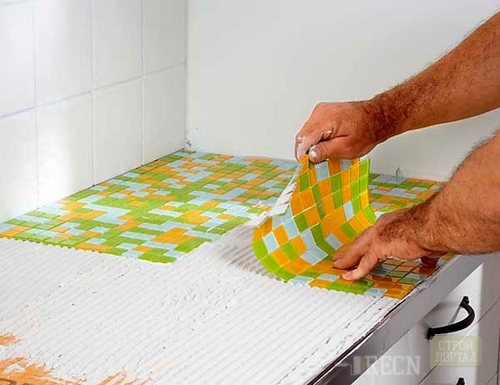
Easy in laying mosaic tile on the grid. Cubes are glued to the grid frame and form a tile of a certain size. The grid is easy to cut and build there, where you need.
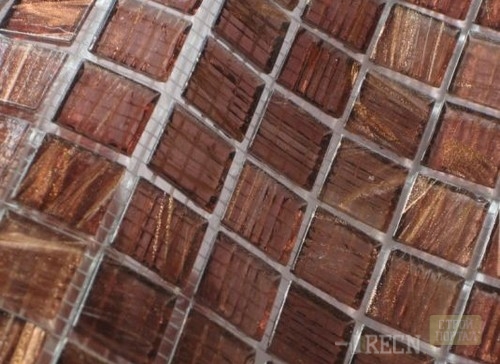
Mosaic friezes in the form of a border with a finished composition within one module are interesting in decorative plan. A single decorative line is obtained from the glued joint in the mix of modules. Such a mosaic tile on the wall is stacked according to the scheme that the manufacturer is attached to the product.
Laying mosaic on the wall. Master Class
Half an hour thoughtful reading, and you are the speakers in the question "How to put a mosaic on the wall"!
To work, you will need: white epoxy glue, nippers, knife, toothed spatula (5 mm cloth length), tiled grout and rubber ironing press.
Clean and cover the work surface.
Using the spatula, process the wall with glue and evenly distribute it on the surface. Please note the glue should be applied only to that part of the wall that you can put a mosaic in the shortest period of time (on average 10 minutes) - the glue dries quickly.
The most interesting part of the work is how to glue a mosaic on the wall. Spread the tile sheets in advance on the table - it is not necessary to lubricate them with glue. After the glue is applied to the wall, immediately lay the mosaic on it (the paper side is facial) so that the two surfaces are tightened efficiently. Tightly press the glued surface with an ironing press - so you eliminate the air bubbles between tiles and glue.
To obtain accurate lines between the tiles, after gluing the first mosaic fragment, apply markup on the working surface. The level can be adjusted and aligned, inserting the struts to the desired places on the surface. An important point - mosaic (especially large) has a feature to settle below the chosen level in the drying process. Before attaching a mosaic sheet to the surface, take the bottom of the double gap, then the tile will gradually become a tile in the right place.
After 20 minutes, when the glue grabbing, slowly remove the paper sheet with the facial surface of the tile. Paper will run up without difficulty, if it is pre-moistened to it with water: carefully so that it is not to move the glued tile to the lacquer, wipe the paper surface with a wet sponge. As soon as the paper is impregnated with water (darken), slow, but self-confident movement from the top corner towards the opposite, free the mosaic from the protective coating.
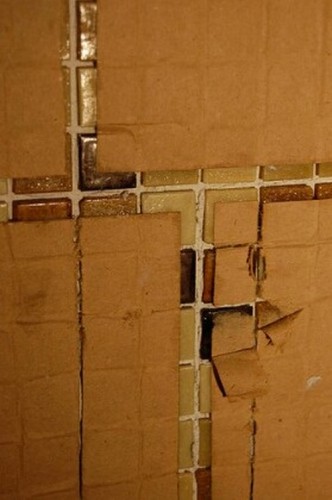
Make sure that there are equal stacks between the tiles in the width. Wait a couple of days before the final drying of the glue and only then go to the next stage of operation - grouting seams. Pre-flush with warm water mosaic from glue that has fallen on the surface of the tile, and paper residues. The grout applies a rigid ironing press diagonally, sticking to the angle in 450. After a quarter of an hour, wipe the mosaic with a dry piece of soft matter (flannel, for example), and then go through the surface slightly moistened with a sponge in water. After 15 minutes, polish the mosaic with a dry cloth. Treat the entire surface immediately, otherwise the inserted flask is removed then it will be almost impossible.
In laying a mosaic, as you can see, there is nothing complicated - the result justifies the effort and time.
New comments
Add a comment
To send a comment you need authorize.




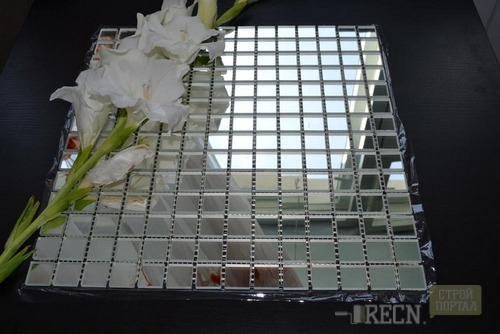
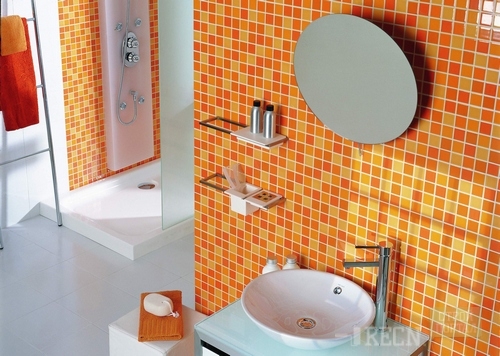
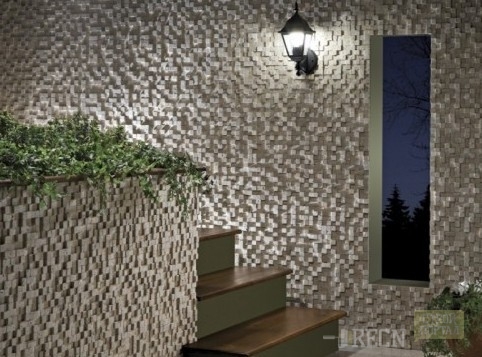
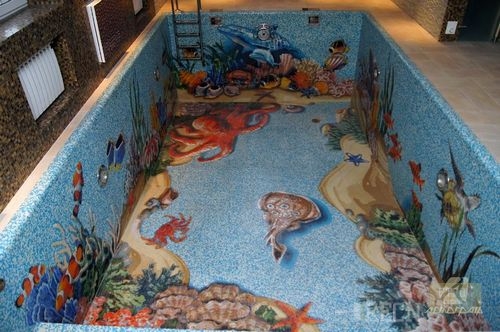
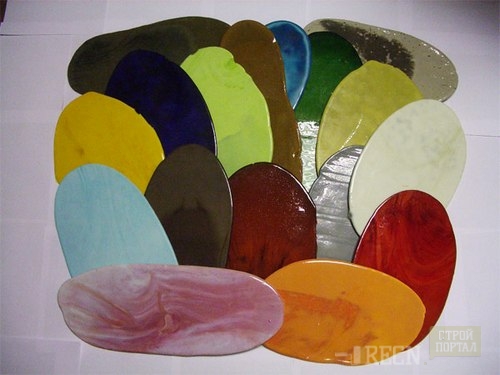

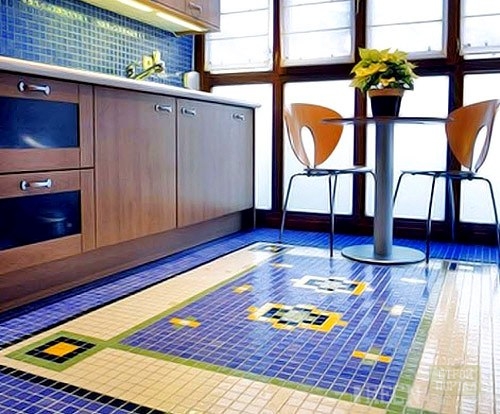
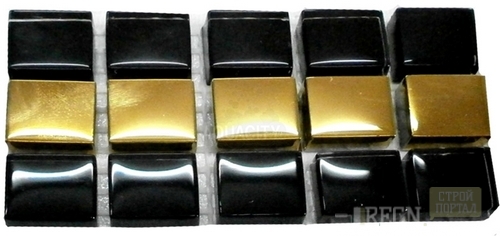
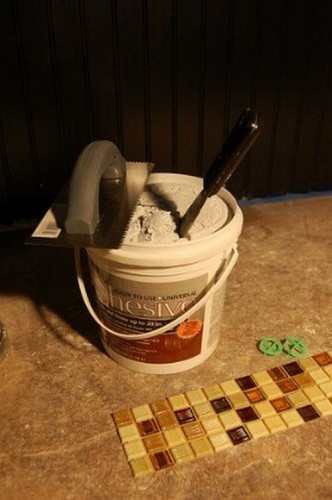




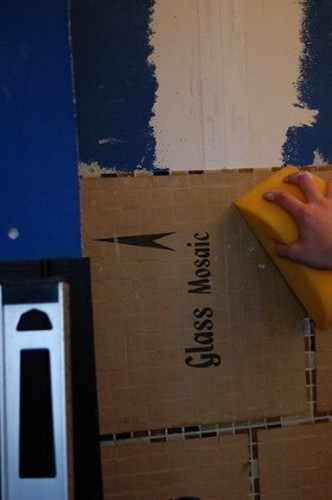
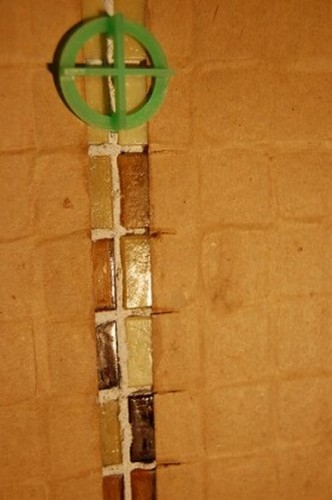
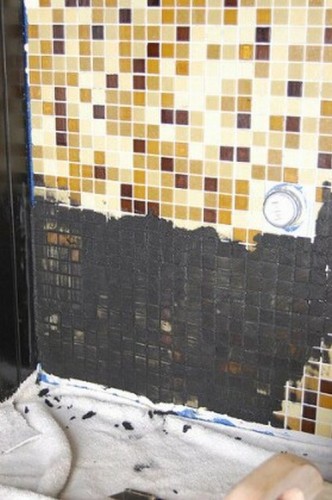

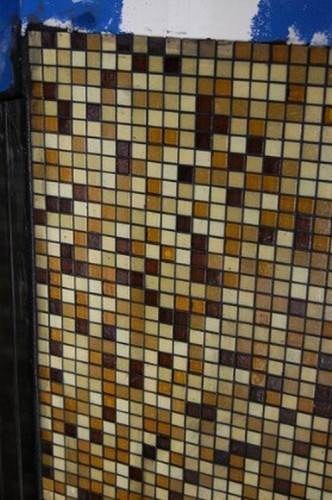















Hello, I would like to ask the Council. My girlfriend has a floor tile of different sizes and colors. Whether it is possible to make it on the wall mazic in the yard. Thanks.
hello! You can make a mosaic, and if you can try it very beautifully) Brechcha is called such a type of mosaic! Look at the photo, read)